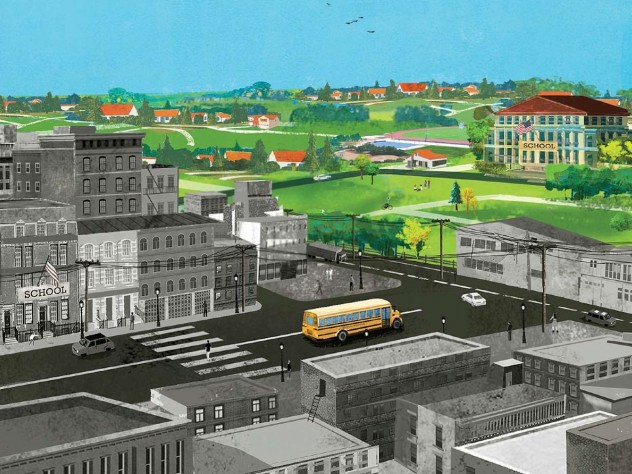Debating School Choice

DURING THE U.S. Bicentennial in 1976, Boston Herald American photographer Stanley Forman, NF ’80, snapped a spot photo of a white man assailing a black man with a pole bearing the American flag. While the nation celebrated its founding revolution, Boston in the 1970s was undergoing a different kind of revolution. “The Soiling of Old Glory,” as the image was later titled when submitted for the Pulitzer Prize, shocked Bostonians: the African American was Ted Landsmark, a civil-rights attorney, and his attacker, Joseph Rakes, a protester against the court-ordered desegregation of Boston public schools, which sparked years of racially motivated violence across the city. The desegregation plan eventually proved very successful at shipping students across the city, but measuring busing’s success in improving educational outcomes for students is not as simple.
One goal of social science is to inject rationality into public debates, like the school-choice question, that have been animated by particularist passions and untested social theories. Evidence-based research has produced divergent data on the effectiveness of school-choice systems (which aim to equalize education access by allowing families to choose among schools in their district) over neighborhood-based schools. Under choice systems, families typically compete for seats at the best schools through a lottery, an admissions test, or some other mechanism. Boston’s busing system shared the same goal: delink children’s neighborhoods from the quality of their education and integrate the schools. (The city abandoned much of the system in favor of more neighborhood-based school assignment in 2013.) Choice’s success depends heavily on the characteristics of the cities where it’s implemented and the mechanics of each system—and a good deal more on factors that researchers don’t yet understand. Recent contributions by visiting professor of economics Parag Pathak and Larsen professor of public policy Christopher Avery suggest that even if school choice could work exactly as intended, the policy may harm the disadvantaged students whom it’s designed to help.
A recent paper models a choice system that assigns schools according to families’ preferences, allotting seats at more sought-after schools by lottery. Parents would compete for access to the best schools, so that each school would not only reflect the socioeconomic mix of the community but also become perfectly equal—and average—in quality, Avery explains. But such a result, the model shows, would encourage wealthy families to abandon the system for better-than-average schools that are either private or in another district—a “flight” phenomenon widely documented already.
Pathak and Avery also show a second mechanism—the effect of school quality on home prices—that forces flight not by wealthy families, but by the poor. “When you introduce school choice, school quality compresses…so the house-price distribution compresses as well,” Pathak says, meaning that low-income families are priced out of their own neighborhoods as the schools in their community improve. Home values reflect differences in school quality so faithfully that prices spike and fall along district boundaries. “You see this at the border between [the Boston public school system] and Brookline...if the houses are almost identical, they’re still very different prices because people perceive the schools to be much higher quality in Brookline,” he explains.
In reality, though, researchers know that school choice hasn’t worked this way. Because of variation in families’ school preferences, imperfect information, test-based admissions systems that favor advantaged students, and other frictions, cities that have embraced choice systems are very far from producing perfectly equal schools. In some cases, school lotteries do help Economists debate the merits of school choice | Harvard Magazine:
